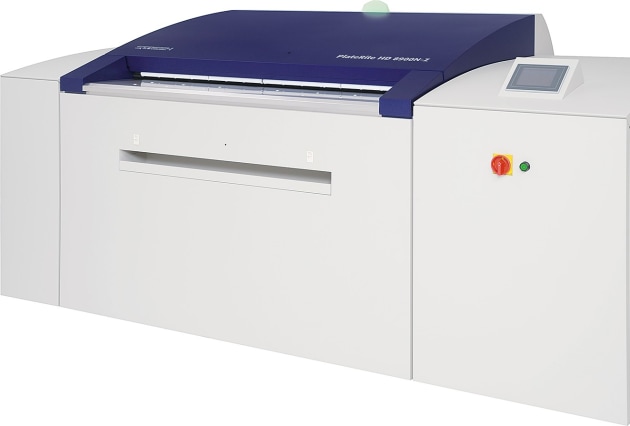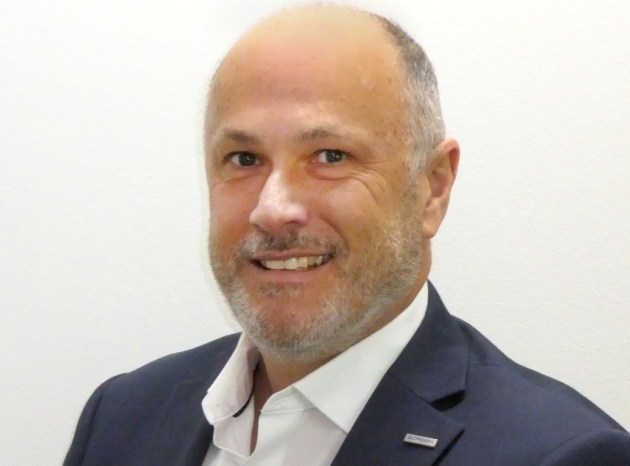SCREEN HITS 20,000 CTP INSTALLATIONS
Print technology developer Screen has just sold its 20,000th CTP system, the major milestone coming a quarter of a century after CTP emerged to revolutionise the prepress and printing industry.

In fact Screen launched its first computer-to-plate (CTP) system at drupa in 1995 as part of a wave of such devices, and together with digital inkjet proofing systems which emerged at the same time, they enabled the widespread take-up of eight and ten-unit long perfectors – the offset presses that would print both sides of a sheet in the same pass.
By the end of the century any printer worth its salt was running long perfectors with CTP and inkjet proofing, and a whole sector of the graphic repro industry – prepress trade houses – was gone, as prepress returned inhouse, and the new method of production slashed turnaround times, and costs.
Screen was one of the pioneering systems, and as the years went by with mergers, acquisitions and strategy changes across various developers, it became the dominant manufacturer, its systems often rebadged under some of the biggest names in the industry. Its success was all the more remarkable given that unlike its major rivals, Agfa, Fujifilm and Kodak, it didn’t have a plate line it could bundle into a deal.
Now Screen says that while CTP may be a mature market – most systems sold are replacements – it certainly isn’t a sunset industry.

Screen GP Australia managing director Peter Scott noted, “The tail-end of 2023 saw a marked upsurge in our PlateRite CTP sales, and requests for replacements in 2024. These were mostly via our plate-supplier partners Fujifilm and Ferag Australia. CTP today is mostly a replacement market and printers are looking for reliable, well service-backed platesetters – something we at Screen Australia pride ourselves in.”
CTP today is virtually all-thermal since the exit of major plate manufacturers from UV violet plates – apart from newspaper CTP and a few legacy devices. “Processless and chemistry-free plates are now the norm in the commercial CTP sector,” said Scott, “the shift to sustainable, low-emission platemaking is almost complete.”
Since releasing its first CTP setter – the PlateRite 1080 in 1995 – Screen built on its fine reputation for reliable film imagesetters and replicated this with 4, 8, 16 and larger page devices. Several plate suppliers, notably Fujifilm and Agfa, turned to Screen for OEM versions of its Kyoto, Japan-made devices.
In passing the 20,000 total CTP units shipped, Screen has also upgraded to its 4-page and 8-page PlateRite machines.
Scott said: “Litho offset is still the strongest print method, and presses have become phenomenally automated. Packaging offset is streaking ahead for folding carton work, as printers balance the decline in commercial offset with the increase in packaged goods. This means more plate changes, more multi-colour work, more short runs. The importance of reliable, well-backed, automated and precise CTP has become all the more important – CTP becomes the heartbeat of busy offset print shops. With this in mind, Screen has upgraded its PlateRite range once again.”
The 8-page (B1) PlateRite HD 8900N series is now known as the HD 8900N II and is available in ‘E, S and Z’ versions for delivering 36, 48 or 70 plates per hour respectively. All models use GLV (Grating Light Valve) optics for uniform light distribution and ultra-high quality dot placement. Leveraging Screen’s market-leading position in photolithography for silicon wafer production, a high-precision autofocus mechanism enables the use of precision screenings such as Screen’s proprietary Spekta-2 and Randot-X FM methods.
Automatic plate loading and unloading adds to efficiency, especially in multi-press environments, with Screen’s AT-M8100N units capable of discharging plates in up to five directions for fully automated platemaking and delivery.
In line with its ‘Innovation for a sustainable World’ philosophy, Screen has also managed to reduce energy consumption on the new PlateRite HD 8900N II series. Taking the Z model as an example, power consumption is reduced by 43 per cent in operation and 93 per cent while the system is idle.
Scott added, “Screen is totally committed to CTP and workflow. We continue to invest in R&D and work with our plate partners to refine and automate plate production to an extent that it can even become a hands-free prepress operation when auto-loaded with up to 600 B1 plates. As always, we back this up with factory-trained technicians, some with 28 years of experience, right here in the Australia, New Zealand and Pacific Islands region.
“As the new year dawns, we have experienced an unprecedented demand for CTP across all formats: four, eight and VLF page sizes up to 48-pages. New Zealand is particularly strong through our partnership with Fujifilm. Of course, Screen also has a leading position in digital printing, particularly in labels, and soon to be in flexible packaging too, but offset is still the dominant print technology by both value and volume, according to a report from the Smithers group.
“This is gratifying, as Screen’s origins were in lithography, and we progressed into offset litho when it emerged in the early 1900s. A modern, automated offset shop is unrecognisable to those early ones, and CTP production is the heartbeat of the workflow as jobs progress from design to completion. Screen GP Australia is proud to be an important part of this progress.”


